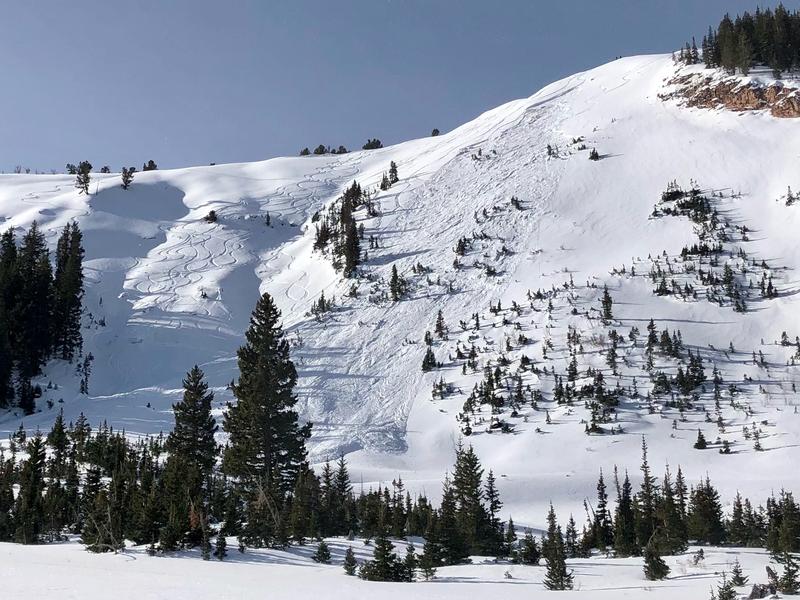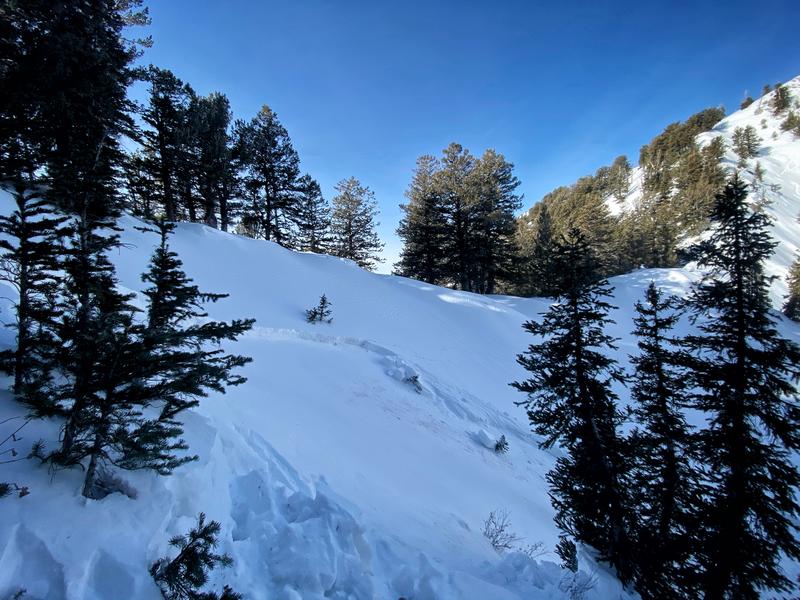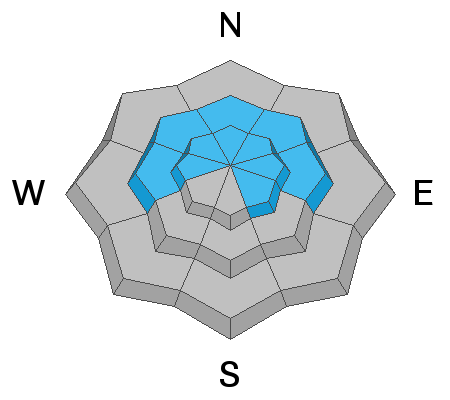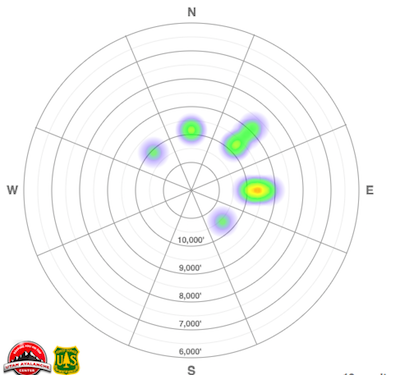Forecast for the Salt Lake Area Mountains

Issued by Greg Gagne on
Saturday morning, January 9, 2021
Saturday morning, January 9, 2021
There is a CONSIDERABLE AVALANCHE DANGER on steep slopes at the mid and upper elevations facing west, through north, and east where recent storm snow and winds have created a dense slab of snow on top of a buried persistent weak layer. Avalanches may be 2-3' deep and over 200' wide. These are dangerous avalanche conditions - avoid being on, underneath, or adjacent to steep slopes on these aspects and elevations where human-triggered avalanches are likely. A Moderate danger exists for triggering a fresh wind drift at the upper elevations affected by the northeasterly winds.
Keep in mind:
- If you are leaving the ski area through an exit gate, you are entering the backcountry and likely stepping into a CONSIDERABLE avalanche danger.
- Previous tracks on a slope are zero indication of stability. (Notice the tracks on the slope adjacent to the site of Friday's accident in Dutch Draw.)
- If you are skiing or riding alone, you have no margin of safety with no one to perform a rescue.
On Friday, I wrote, "There have been several close calls/near misses this past week and I am fearful our luck has run out." Indeed it has, and I wish I was wrong. Fortunately, excellent riding conditions exist on low-angled slopes other than due south.
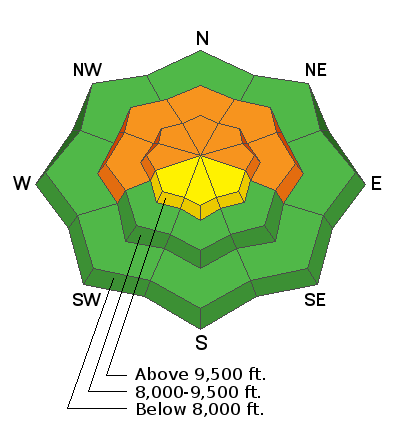
Low
Moderate
Considerable
High
Extreme
Learn how to read the forecast here


